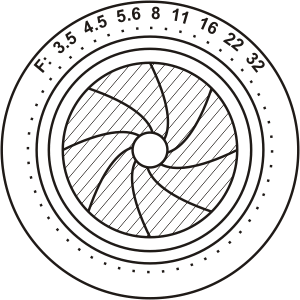
Prime or Zoom? Another concern is whether to use prime (fixed focallength) lenses or zoom lenses. Faster prime lenses will get lots of use, as they afford many more “available light” opportunities than slower speed lenses. Although modern zoom lenses, particularly those designed for digital SLRs, are extremely sharp, many photographers insist that a multi purpose lens cannot possibly be as sharp as a prime lens, which is optimized for use at a single focal length.
Mike Colón, a talented photographer from the San Diego area, uses prime lenses (not zooms) in his wedding coverage and shoots at wide-open apertures most of the time to minimize background distractions. He says, “The telephoto lens is my first choice, because it allows me to be far enough away to avoid drawing attention to myself but close enough to clearly capture the moment. Wide-angle lenses, however, are great for shooting from the hip. I can grab unexpected moments all around me without even looking through the lens.”
Zoom lenses are also extremely popular however, and offer unbeatable versatility, allowing you to move quickly from wide to tight views. A common choice seems to be the 80–200mm f/2.8 (Nikon) or the 70–200mm f/2.8 (Canon and Nikon). These are very fast, lightweight lenses that offer a wide variety of useful focal lengths for both the ceremony and reception. They are internal focusing, meaning that the autofocus is lightning fast and the lens does not change length as it is zoomed or focused. At the shortest range, either of these lenses is perfect for creating full- and three-quarter length portraits. At the long end, the 200mm setting is ideal for tightly cropped, candid shots or head-and-shoulders portraits. These zoom lenses also feature fixed maximum apertures, which do not change as the lens is zoomed. This is a prerequisite for any lens to be used in fast-changing conditions. Lenses with variable maximum apertures provide a cost savings but are not as functional nor as bright in the viewfinder as the faster, fixed aperture lenses.
Wide Angles. Wide-angle lenses, both fixed focal length lenses and wide-angle zooms, are also popular. Focal lengths from 17mm to 35mm are ideal for capturing the atmosphere as well as for photographing larger groups. These lenses are fast enough for use by available light with fast ISO.
Telephotos. Another favorite lens is the high-speed telephoto—the 400mm f/2.8 or 300mm f/4.0 (Nikon) and the 300mm and 400mm f/2.8L (Canon) lenses. These lenses are ideal for working unobserved and can isolate some wonderful moments, particularly of the ceremony. Even more than the 80–200mm lens, the 300mm or 400mm lenses throw backgrounds beautifully out of focus and, when used wide open, provide a sumptuously thin band of focus, which is ideal for isolating image details.
0 comments:
Post a Comment